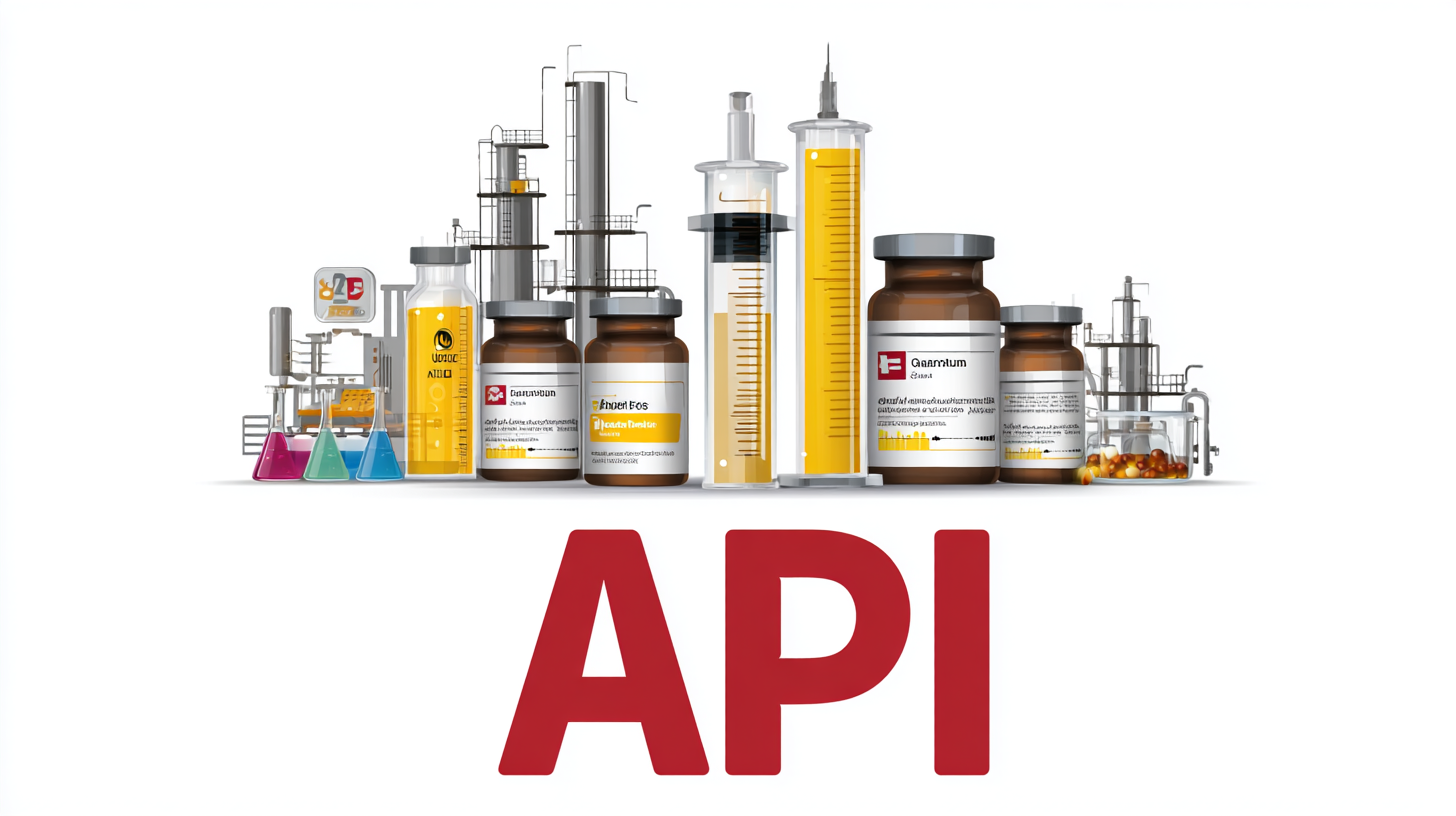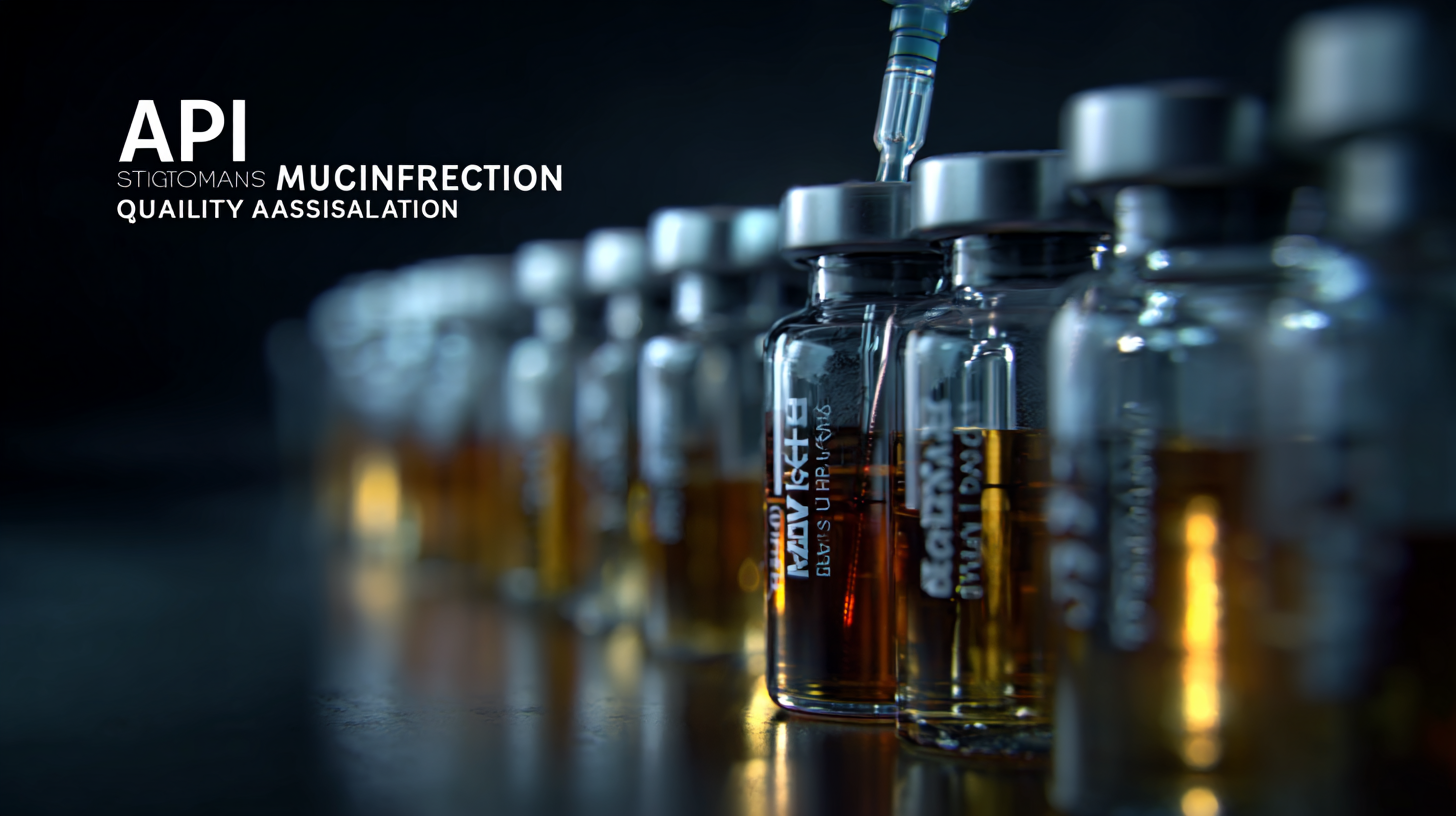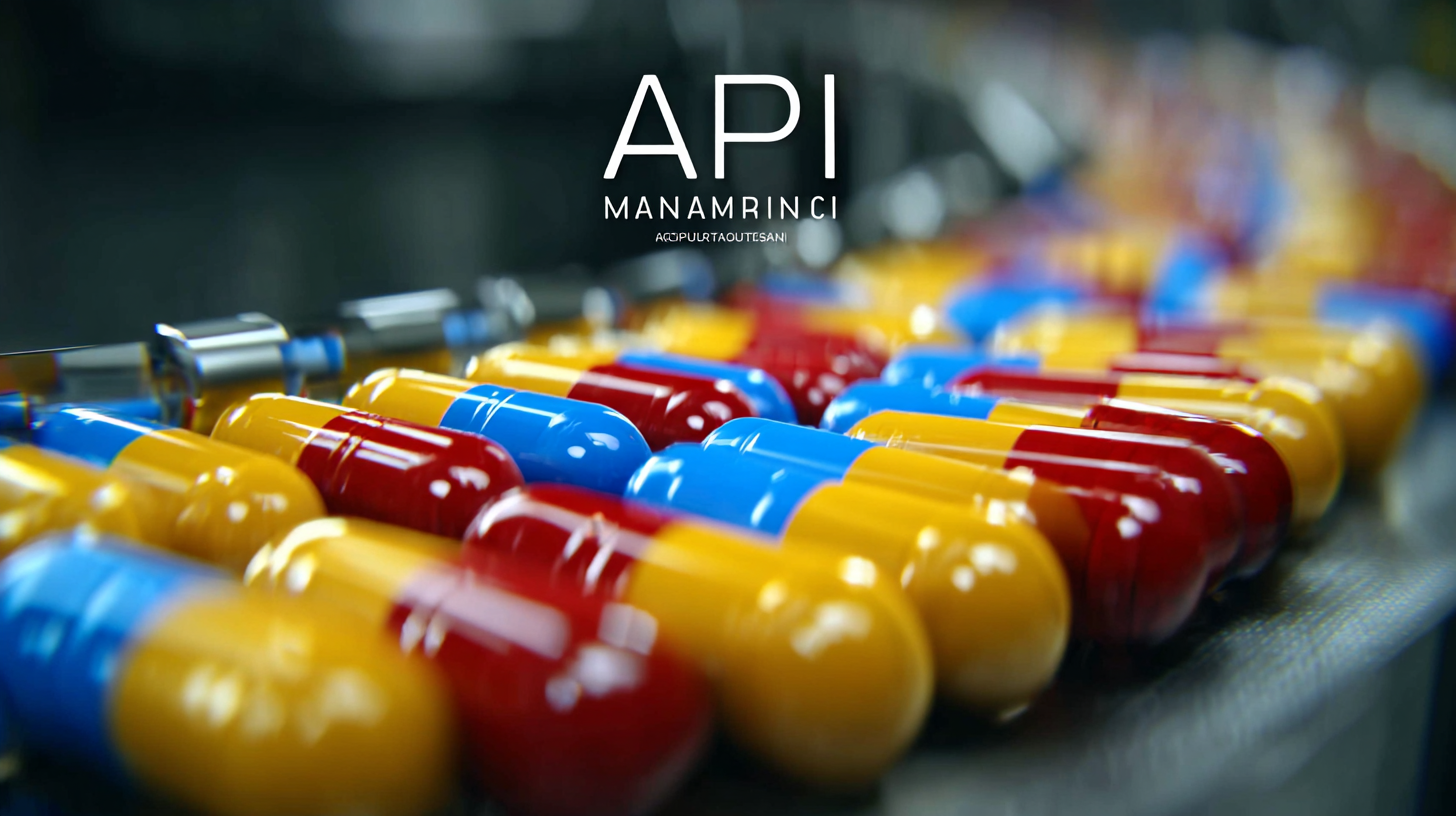In the ever-evolving landscape of the pharmaceutical industry, ensuring top-notch quality in Pharma API Manufacturing is paramount for both regulatory compliance and patient safety. As global standards continue to shift and expand, manufacturers must adopt a comprehensive checklist approach to navigate these complexities effectively. This blog aims to dissect the essential components of quality assurance in Pharma API Manufacturing, highlighting the critical criteria that stakeholders should prioritize. By understanding and implementing global standards, professionals in the field can enhance operational efficiency, mitigate risks, and ultimately improve the overall quality of pharmaceutical products. Join us as we explore a detailed checklist designed to empower and guide manufacturers in achieving excellence in their API production processes.

In the realm of pharmaceutical manufacturing, adherence to global standards for Active Pharmaceutical Ingredient (API) production is crucial for ensuring quality assurance. Key characteristics of these global standards revolve around stringent regulatory frameworks established by organizations such as the World Health Organization (WHO) and the International Council for Harmonisation (ICH). These frameworks mandate rigorous testing and validation processes, ensuring that APIs meet specified purity, potency, and safety criteria. Compliance with these standards not only safeguards public health but also enhances the reliability of pharmaceutical products in the global marketplace.
Another significant characteristic is the emphasis on continuous improvement and risk management throughout the manufacturing process. This involves implementing Good Manufacturing Practices (GMP) that dictate every aspect of production, from raw material sourcing to final product testing. Regular audits and inspections are integral to maintaining high standards, fostering a culture of accountability within manufacturing facilities. Moreover, the adoption of advanced technologies and data analytics plays a vital role in monitoring production processes, allowing for real-time quality assurance and swift identification of any deviations. Thus, understanding and adhering to these key characteristics is essential for pharmaceutical companies aspiring to elevate their API manufacturing practices in alignment with global standards.
In the ever-evolving landscape of pharmaceutical manufacturing, a comparative analysis of regulatory frameworks across major global markets is vital for ensuring quality assurance in API production. Countries like the United States and China are increasingly scrutinizing their regulatory environments to streamline biosimilar market entry, addressing varying uptake rates and consumer safety concerns. A comparative study indicates that while the US FDA has established a robust framework for biosimilars, China's recent regulatory adaptations are designed to bolster domestic production capabilities and promote competitive pricing. This divergence presents both challenges and opportunities for manufacturers aiming to navigate complex compliance landscapes.

A report on post-marketing surveillance of cell and gene therapy products reveals significant variations in regulatory practices among the EU, US, Japan, South Korea, and China. For instance, heightened safety monitoring in the EU contrasts with a more expedited approval process in the US, reflecting differing approaches to balancing innovation with patient safety. Such insights are crucial for pharma companies intending to optimize their operational strategies in diverse regulatory environments, ensuring that they not only meet regulatory expectations but also enhance consumer trust in their products. Consequently, understanding these comparative frameworks is essential for driving sustainable growth in the global pharmaceutical API marketplace.
In the highly regulated realm of pharmaceutical manufacturing, quality assurance (QA) for Active Pharmaceutical Ingredients (APIs) is a critical component that varies across countries. Different nations adopt distinct standards and practices, influenced by their regulatory frameworks, technological advancements, and market demands. A clear understanding of these variances can significantly enhance the reliability and safety of drug products globally.
When it comes to implementing quality assurance measures in API production, several tips can be invaluable. Firstly, ensure compliance with Good Manufacturing Practices (GMP) as stipulated by local regulatory bodies, such as the FDA in the U.S. or EMA in Europe. This compliance forms the backbone of quality assurance and ensures that manufacturing processes are consistently controlled. Additionally, conducting regular training sessions for staff about QA protocols can promote a culture of quality and vigilance in production.
Another critical aspect is the adoption of risk management strategies throughout the production process. Identifying potential risks early and integrating proactive measures can help mitigate issues before they escalate. Utilizing advanced technologies, such as real-time monitoring and data analytics, further enhances the ability to maintain quality standards and promptly address deviations, fostering a robust quality assurance framework across diverse manufacturing environments.
In the pharmaceutical industry, adherence to global standards is crucial for ensuring the efficiency of the supply chain. Various regulatory bodies, including the FDA and EMA, establish guidelines that dictate the manufacturing, handling, and distribution of Active Pharmaceutical Ingredients (APIs). These standards help mitigate risks associated with product recalls, ensuring that only high-quality medications reach patients. By streamlining processes and promoting consistency, organizations can optimize their operations and minimize delays in delivering essential drugs.
Tip: Regularly conduct training sessions for your team on the latest global regulatory changes. Staying informed helps mitigate compliance risks and enhances overall supply chain efficiency.
Establishing strong relationships with suppliers and stakeholders is vital in maintaining adherence to these standards. Collaboration fosters transparency, allowing for the efficient sharing of information regarding quality control and regulatory compliance. This synergy not only strengthens the supply chain but also promotes a culture of quality across the organization.
Tip: Implement a robust supplier evaluation process that assesses compliance with global standards, ensuring that you partner with reliable sources that align with your quality assurance goals.

The pharmaceutical industry faces numerous challenges and benefits when adopting international best practices in Active Pharmaceutical Ingredient (API) manufacturing. One notable challenge is the need to balance compliance with global standards while also considering local regulatory environments. Companies must navigate complex regulations that often vary between regions, which can lead to increased costs and operational inefficiencies. Furthermore, the urgency of environmental considerations, from production to disposal, highlights the importance of sustainable practices in mitigating the industry's carbon footprint.
To effectively address these challenges, embracing innovative strategies is essential. For example, implementing decarbonization solutions can significantly reduce emissions in API manufacturing. Companies should not only focus on meeting regulatory requirements but also prioritize eco-friendly practices that resonate with consumers and stakeholders alike.
**Tips:** Focus on building a robust compliance framework that incorporates both international standards and local regulations. Additionally, invest in research and development to explore sustainable manufacturing practices and consider the entire life cycle of your products to minimize environmental impacts. Engaging with stakeholders can provide valuable insights into the challenges faced and help foster a culture of continuous improvement in quality assurance processes.
| Dimension | Challenge | Benefit |
|---|---|---|
| Regulatory Compliance | Complexity of international regulations | Enhanced market access |
| Cost Management | Higher initial investment | Long-term cost savings |
| Quality Control | Implementation of rigorous testing protocols | Improved product quality and safety |
| Training and Education | Need for continuous staff training | Increased workforce competency |
| Supply Chain Efficiency | Complex logistics management | Streamlined operations |
| Technology Integration | Challenge of adopting new technologies | Enhanced production capabilities |